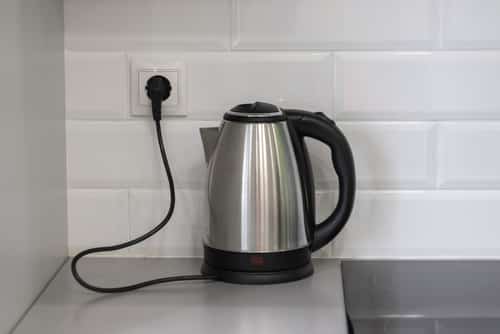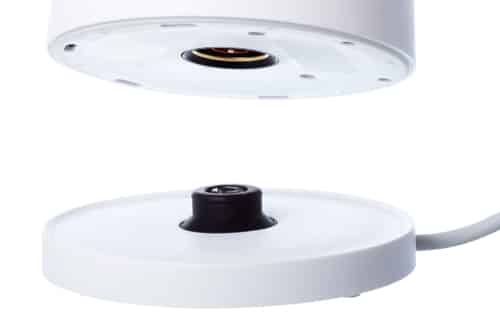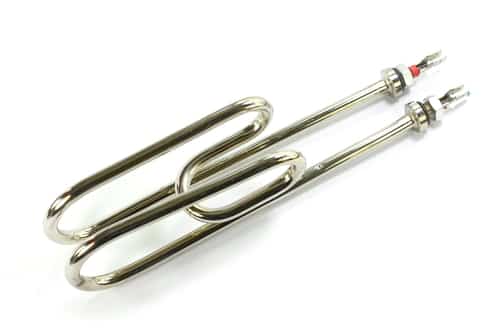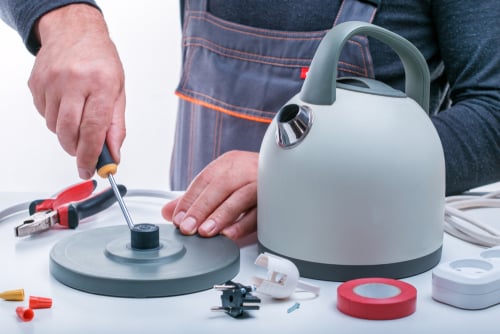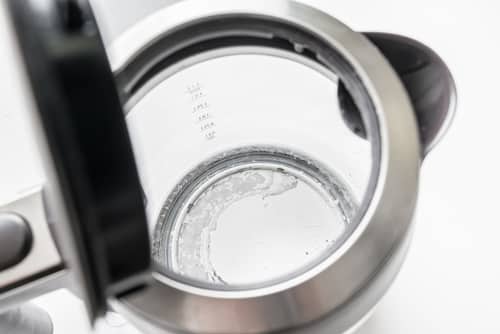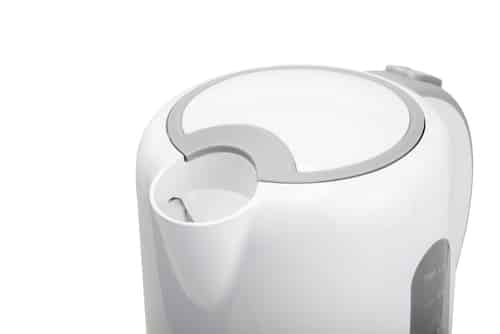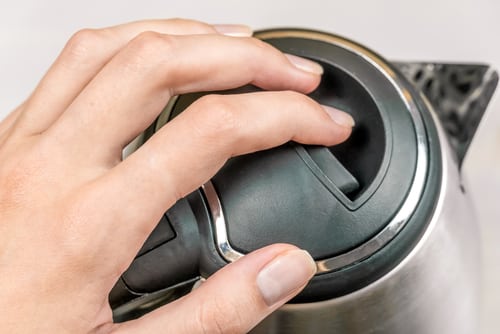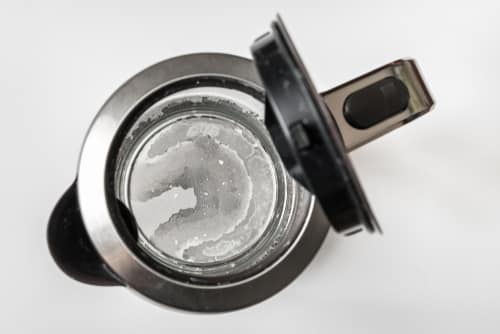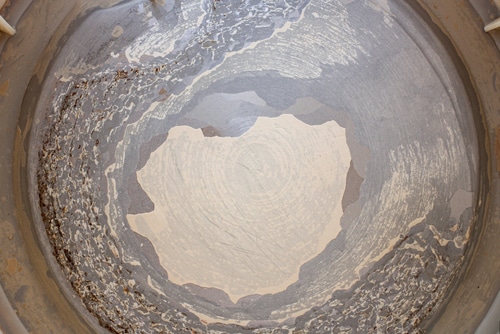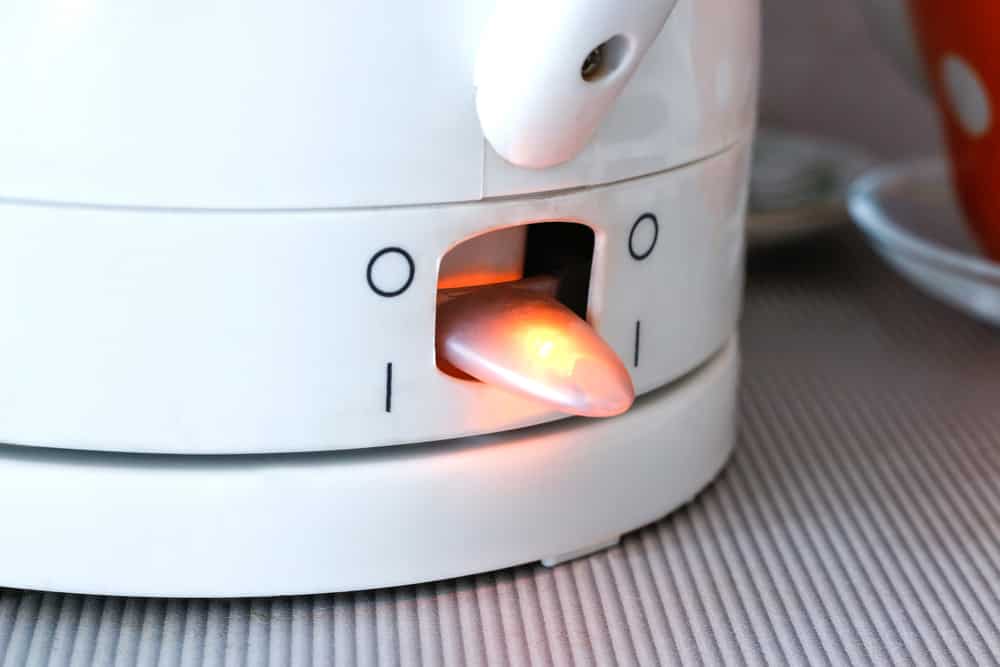
Electric kettles are by and large the most popular kitchen appliance used all over the world. They are the preferred choice for most people because they are so convenient and make it easy for people to boil water.
There are a number of different companies that manufacture different kinds of electric kettles, but the mechanism and functionality remain largely the same.
You just connect the kettle to an electrical socket, and you are good to go. The kettle will draw power and boil the water by converting electrical energy into heat.
Some kettles have electrical coils that deliver the heat, while others have a simple hot plate that heats up when electrical power is provided.
However, if your electric kettle doesn’t heat up the water even after you connect it, there’s a risk of an internal component not working properly.
If the light on your kettle turns on but it doesn’t boil the water, the issue could be caused due to a number of different reasons.
Here are five recommended solutions that you should try out to fix the problem.
Kettle Light On But Not Boiling
1. Power Supply
The power supply is important for operating the kettle, and an interrupted power connection could be why the water isn’t boiling. For this reason, you need to check that the power cable is properly plugged in.
Secondly, you have to ensure that the wire is in optimal condition and there are no signs of physical damage to the wire. This is because a damaged power cable could interrupt the power connection to the kettle.
Thirdly, if you are using a cordless or wireless kettle, you have to ensure that the base is well-fitted in its position to ensure it boils water properly.
These look like simple fixes, but most people often panic and fail to properly hook up their kettle. For instance, if you don’t fix it properly on the base, the kettle will simply not boil the water.
Before you start looking at any of the other solutions on this list, it is important that you work on these first.
2. Heating Element
If there are no issues related to the power supply, but the kettle is still not boiling water, there is a high chance that the heating element isn’t working as it is supposed to.
The heating element tends to wear out with time, or it is likely to sustain damage in case of severe impact. So, if you dropped the kettle recently and the water isn’t boiling, there are chances that the heating element has gotten damaged.
For this reason, you have to get the heating element replaced. As soon as the heating element is replaced, try it again, and the water will start boiling.
Now, this seems much easier than it looks. To replace the heating element, you will have to take the kettle to your local appliance repair technician.
It’s unlikely that you will get warranty coverage in case you dropped the kettle.
However, if the heating element stopped working out of the blue, you might want to consider calling up the company to figure out whether warranty coverage is available. You might be able to get coverage for it.
If not, then your best bet is to just visit a local appliance repair technician. They are going to check the kettle and install a new heating element inside to get it working again.
3. Leaking
If there are no issues with the heating element, you might want to consider looking for leakage in the kettle.
The kettle’s bottom could have a tiny hole or body that causes water to leak out. In particular, these leakages happen around the folded joints.
So, if there is a tiny hole, there is nothing much that you can do except replace the base. In simpler words, you have to stop the leakage to ensure water starts heating and boiling.
Some people might think that plugging in the hole with an adhesive might do the trick, but it usually doesn’t.
These kettles are made using specialized plastic or other materials and have specialized sensors in place. In case of a leakage, no adhesive or other material can plug it in. The kettle will simply stop working.
It’s also not a wise idea to go for such temporary fixes.
The last thing you want is for the holes to start leaking again while the kettle is boiling, which causes a serious problem as boiling water starts flowing throughout the counter.
4. Lid
This might come as a surprise to most people, but in case you do not put the lid properly on the kettle, there is a strong chance that your kettle won’t work, and you won’t see water boiling
So, if the light is switched on, but the water won’t boil, you have to check the lid and make sure it’s placed in properly.
In addition to proper placement of the lid, make sure that there are no cracks and damages to the lid. This is because a damaged or cracked lid won’t fit in properly, and water won’t boil.
Electric kettles are fitted with close sensors that only activate when the kettle’s lid is properly placed on it. In case the lid is not fitted the right way, the sensors will trip, and the kettle just won’t turn on.
If the lid’s placed properly and the kettle still doesn’t turn on, it’s probable that there’s an issue with the latch.
Usually, when you put the lid on, it’ll close with a satisfying click. If you don’t hear that click, then there’s a pretty strong chance that the lid hasn’t shut down properly.
In certain cases, small pieces of debris might get stuck in the mechanism as well, causing the latch to not close properly. Try cleaning out the lid and the kettle both to get rid of any debris and then try to close it again.
5. Scaling
Over the course of time, scaling can develop on the bottom of the kettle. This is because repetitive addition of water will develop water scaling on the bottom, and it needs to be properly cleaned.
Keep in mind that if the bottom has scaled, it will take longer to boil water. So, make sure that the internal side of the kettle is properly cleaned and there is no buildup inside the kettle.
These are simply limestone deposits from the excess calcium or limestone found in the water. As the water boils up, some deposits are left at the bottom. Over time, these deposits harden, and you can easily spot them at the bottom of the kettle.
If the thickness of these deposits builds up considerably, the kettle’s core functionality will be impaired. It’s not easy for heat to pass through the thick limestone deposits, which is what causes the kettle to stop boiling properly.
You will want to get rid of all the limestone deposits at the bottom of the kettle (or on the sides), and then see if that works. In most cases, the kettle should start working.
However, if none of these fixes do the trick, you might want to consider replacing the electric kettle. Most electric kettles are generally quite basic, so even an internally damaged wire could cause it to break down.
There are no moving parts either. If the kettle breaks down, you will simply have to replace it. Thankfully, replacement electric kettles are quite cheap, so you can easily buy one from any store that deals in-home or kitchen appliances.
